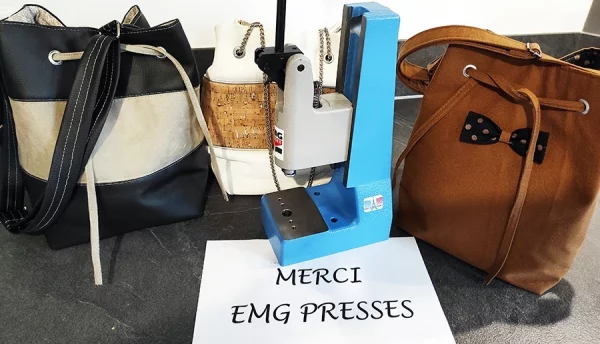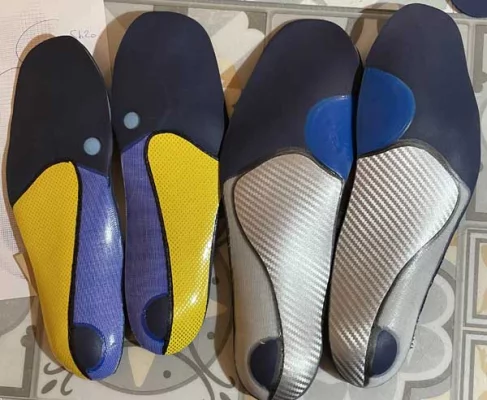Cutting out
Strip cutting is a common operation in the production of metal parts. This operation consists of separating all or part of the areas of a strip to obtain the desired shape. Stamping is also useful for trimming parts, whether to remove burrs from a previous operation or to remove a part from a foundry cluster.
One of the most common solutions used in industry is the use of mechanical or pneumatic presses to cut all kinds of parts.
Cutting with a pneumatic or mechanical press
Whether pneumatic or mechanical, a press can cut all types of material (steel, aluminium, stainless steel, etc.), whatever the shape of the metal parts to be machined. The power of the press must be adapted to the thickness (up to several millimetres) and characteristics of each material in order to obtain a perfect cut. The depth of the gooseneck determines the length and width of the parts that can be cut.
Press cutting: everything you need to know about this versatile tool
Whether pneumatic or mechanical, a press fitted with the right high-performance tooling can cut all types of material (steel, aluminium, stainless steel, etc.), whatever the shape of the metal parts to be machined. The power of the press must be adapted to the thickness (up to several millimetres) and characteristics of each material in order to obtain perfect cutting results. The depth of the gooseneck determines the length and width of the parts that can be cut.
What is a die-cutting press and how does it work?
A die-cutting press is an industrial tool that uses mechanical force to cut various materials such as steel, aluminium or stainless steel. Different technologies, depending on the type of press chosen, are used to obtain the necessary pressure in a perfectly linear axis to make precise cuts.
The different types of die-cutting presses and their uses
There are two main types of press particularly suited to this application: mechanical and pneumatic technologies. Pneumatic presses are ideal for small to medium-sized production runs, while mechanical presses are better suited to large-scale production runs, enabling a large number of parts to be processed quickly. The power of these EMG presses means that cutting is extremely precise, burr-free and effortless. An effort management system monitors production quality.
The presses can be integrated into production lines comprising unwinders, straighteners and feeders, and can work at speeds of up to 240 strokes per minute for the 6T press.
Mechanical presses can be used to rapidly process a very large number of parts, with a simple feed process that extends right through to the removal of each part in complete safety for the operator.
The advantages of using a press for cutting operations in your workshop
As a manufacturer of presses adapted to assembly, stamping, bending and riveting operations, we have many years' experience and expertise that is recognised by our customers.
Our wide range of machines can meet the vast majority of your needs. However, if your activity requires adaptations for specific cutting tools, our know-how enables us to provide you with a fully adapted solution. We can design special machines and made-to-measure equipment to your specifications.
Die-cutting: increased productivity thanks to the speed and efficiency of the press
The use of a die-cutting press can considerably increase the productivity of your workshop. Thanks to their speed, these presses reduce the time spent on each cutting operation.
Lower production costs thanks to automation and the use of less expensive materials
Our cutting presses can be integrated into systems that can be automated, for example to create a raw material feed system, which not only reduces production costs but also maintains maximum cutting quality.
How do you choose the right die-cutting press for your specific needs?
How do you choose your die-cutting press? Which press is best suited to cutting the parts you are machining? Simple theoretical calculations can be used to estimate power requirements for all cutting operations.
Important considerations when choosing a die-cutting press
When choosing a press, a number of criteria need to be taken into account to ensure efficient cutting adapted to your production:
-load capacity
- the size of the machine
- technical features such as stroke and overall dimensions.
Tips for using a press efficiently and sustainably in your cutting processes
Whatever your press, regular maintenance is essential. Looking after it and carrying out maintenance operations at the right times will extend the life of your machine.
Best practices to ensure operator safety when using a cutting press
Operator safety is one of our main concerns. Our machines are designed to improve operator comfort at work. Our teams can provide support:
- to help you set up the workstation and put in place all safety measures
- to ensure that users are trained in good practice when using the press.
Regular maintenance and servicing to extend the life of your cutting press
As with any machine, regular maintenance of your press is one of the keys to prolonging its life. By carrying out regular checks and repairs, you can guarantee optimum operation and consistent precision in your cuts.
Our technical department offers preventive maintenance contracts, as well as carrying out the mandatory periodic checks.
With EMG, make the right choice for your cutting operations and optimise your production.
Whether you need a small or large series, mechanical or pneumatic presses can meet your requirements.
EMG presses offer outstanding quality and precision for both small-scale and industrial die-cutting. They also guarantee optimum speed of execution, particularly when parts need to be produced in large series.
Don't hesitate to contact us for personalised advice and to choose the tool best suited to your specific needs, whether for cutting parts or other industrial applications such as assembly, bending or marking.



